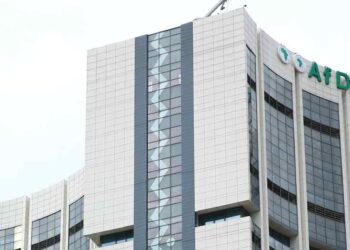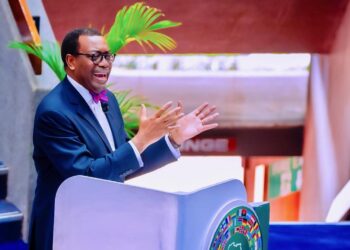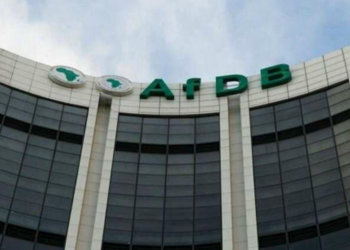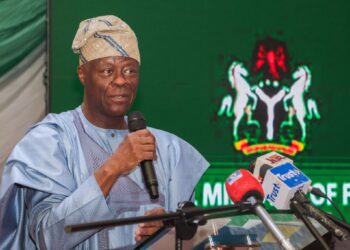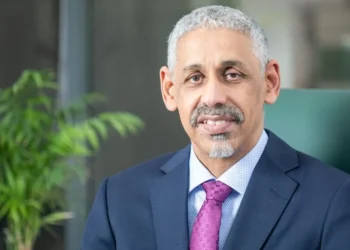Dr. Akinwumi Adesina, the president of the African Development Bank (AfDB) Group has said that Africa’s share in global green bonds issued in 2021 was 0.26%.
He said this during a speech at the COP 27 launch of the Alliance for Green Infrastructure in Africa (AGIA). AGIA is a new platform that has been created to speed up the development of green infrastructure in Africa in our collective drive towards net zero emissions. The alliance for green infrastructure is being established by the AfDB and the Africa50 in partnership with the African Union Development Agency, the European Investment Bank, the European Bank for Reconstruction and Development, and the Rockefeller Foundation.
In February 2022, the AfDB announced that in partnership with Africa50, the African Union Commission, and the African Union Development Agency, it was exploring collaboration with global partners to create an Alliance for Green Infrastructure in Africa.
Africa’s poor share: During his speech at the COP 27 launch, Dr. Adesina said green infrastructure is very limited in Africa and this can be seen in the share of Africa when it comes to the green bonds on infrastructure globally. Out of the $522 billion that has been on green bonds from 2007 to 2018, Africa accounted for just $2 billion, which is about 0.4%. As of 2021, $623 billion of green bonds were issued globally, and Africa’s share was 0.26%, the lowest share of any region in the world. The same can be said in terms of green loans, Africa’s share is 1.9%. Meanwhile, in terms of global issuances of sustainability bonds and sustainability-linked loans and bonds, Africa’s share is 1%.
Paying the price: In June 2022, Jean-Paul Adam, the director, Technology, Climate Change, and Natural Resources Management Division at the United Nations Economic Commission for Africa (UNECA), noted that Africa has low private sector investment and high costs of capital to invest in green, sustainable, or social sectors. He highlighted the fact that while Africa has 23% of official climate finance, it has less than 1% of global green bond issuances and is paying twice more than similarly rated peers to access markets.
At the AGIA launch, Dr. Adesina also spoke about the focus of AGIA, which is to develop low-carbon climate-resilient infrastructure for Africa. According to Dr. Adesina, AGIA is being established to:
- Close Africa’s infrastructure financing gap
- Build sustainable and resilient infrastructure for Africa
- Mobilize African and global institutional investors to invest in quality, green infrastructure
- Speed up the scale that is needed for accelerating Africa’s transition to net zero
- Mobilize private sector capital at scale to support the greening of Africa’s infrastructure
Infrastructure financing gap: Dr. Adesina made it clear that it is only by working together with partners and investors that Africa can make transformative impacts and set the continent on a clear path to achieving net zero emissions and mitigating climate change. Africa needs infrastructure financing estimated at $130 to $170 billion a year with an infrastructure financing gap of up to $108 billion a year. Most of the infrastructure for Africa is yet to be built, and this presents an enormous opportunity to get it right. The emphasis should be on building green infrastructure that is climate-smart and climate-resilient in Africa.
How this can be achieved: Dr. Adesina told attendees that globally, there are $103 trillion dollars of assets under management and if Africa can get 0.03 to 0.04% of that figure, the continent will literally close all of its infrastructure financing gaps. He said AGIA will use its resources to green existing brown infrastructure in Africa – converting heavy fuel and diesel plants to gas hybrid and power industries, greening non-power infrastructure especially transport systems in Africa using compressed natural gas, capturing flared gas and converting it to liquefied petroleum gas, which is needed for cooking, gas-to-power and the manufacturing of fertilizers.
Why this matters: As Adesina emphasized, the shift to accelerating the development of green infrastructure will open up great opportunities for the launch of more green bonds and crowding institutional investors that are driven increasingly by environmental, social, and governance (ESG) criteria in their investment decisions.
- By focusing on the development of green infrastructure, Africa can increase its share of green bonds that it accounts for roughly 2.5% globally, crowding in at least $14 billion in green financing to boost Africa’s green infrastructure asset.








